Berries are delicious and nutritious. They have a lot of uses for people and many animals. Some animals need berries year-round for their survival, while we mostly use berries to make wines and other drinks.
There are many berries that you can harvest in winter. Some of these berries are edible. Here are nine examples of winter berries that might interest you:
1. Juniper (Juniperus communis)
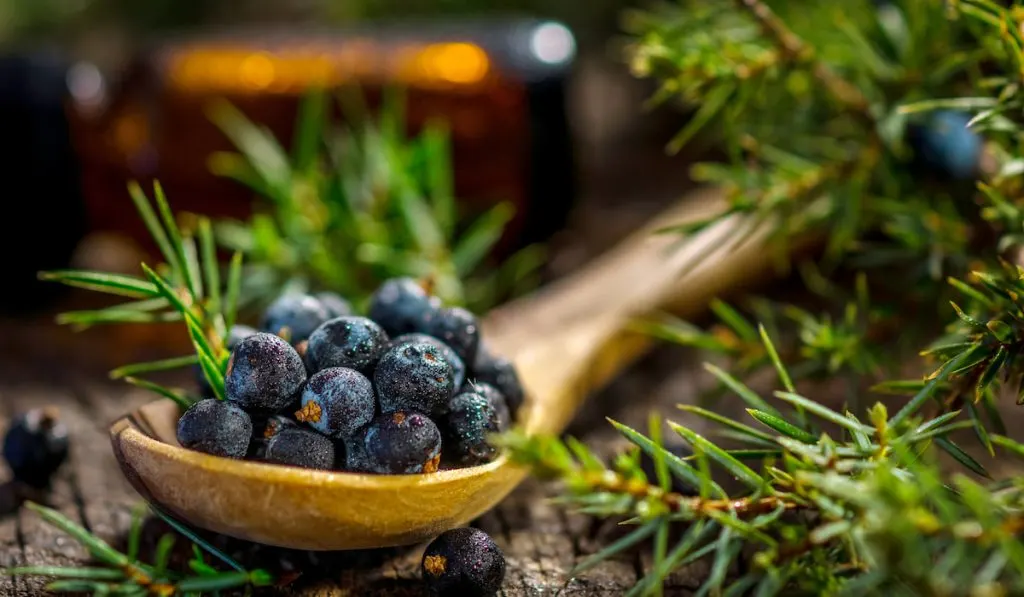
This berry is fleshy, aromatic, and purple. It is popular in making gin flavors, sauces, and liqueurs. The oil in juniper berries can aid respiratory and digestive functions.
The juniper tree grows year-round and produces berries in winter. Both humans and animals (especially birds) collect and eat juniper berries.
2. Rowan (Sorbus aucuparia)
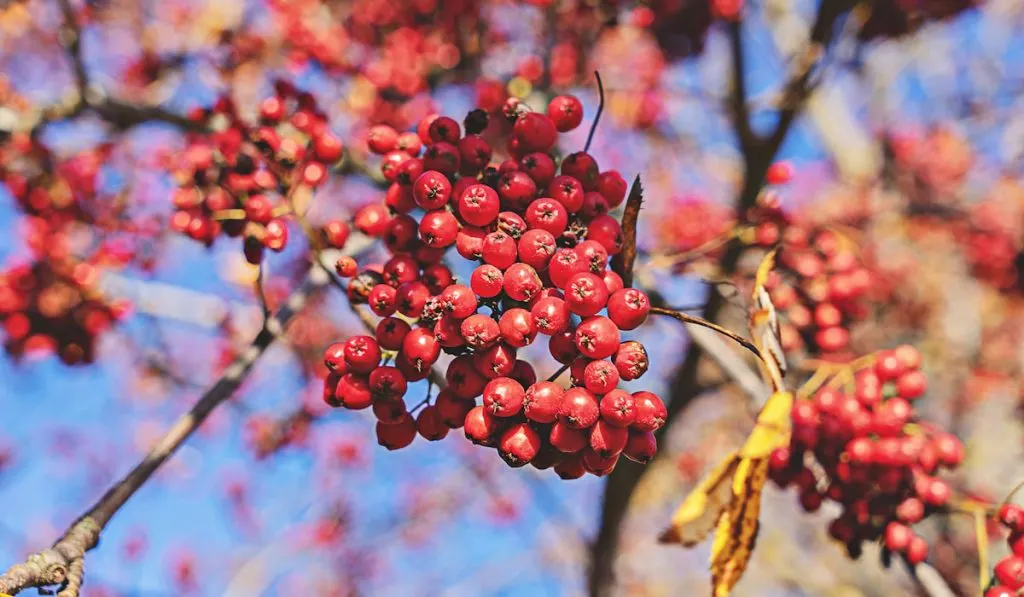
This particular berry is rich in vitamin c, though it tastes a little bit sour. It is mostly used to make jelly which can be consumed with meat.
The tree produces berries from August to January, so people and animals searching for winter berries can get a lot of berries from this tree.
The tree produces clumps of red-orange berries. It is mostly found in the wild in Scotland but is gaining popularity as a street or garden tree since it is winter-hardy.
3. Blackthorn (Prunus spinose)
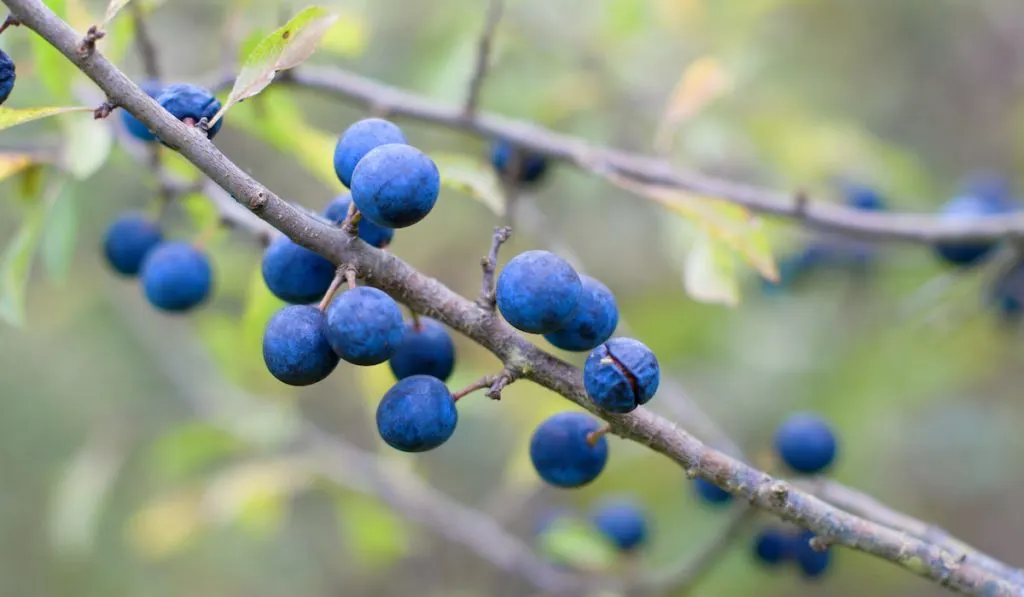
These berries can also be called sloes. They are blue-black and measure a little bit over 1cm across. In winter, animals such as birds and insects forage for sloes as they are produced from September to December.
People consume sloes, but they are more popular in winemaking. They can also be used to add flavor to gins.
4. Hawthorn (Crataegus monogyna)
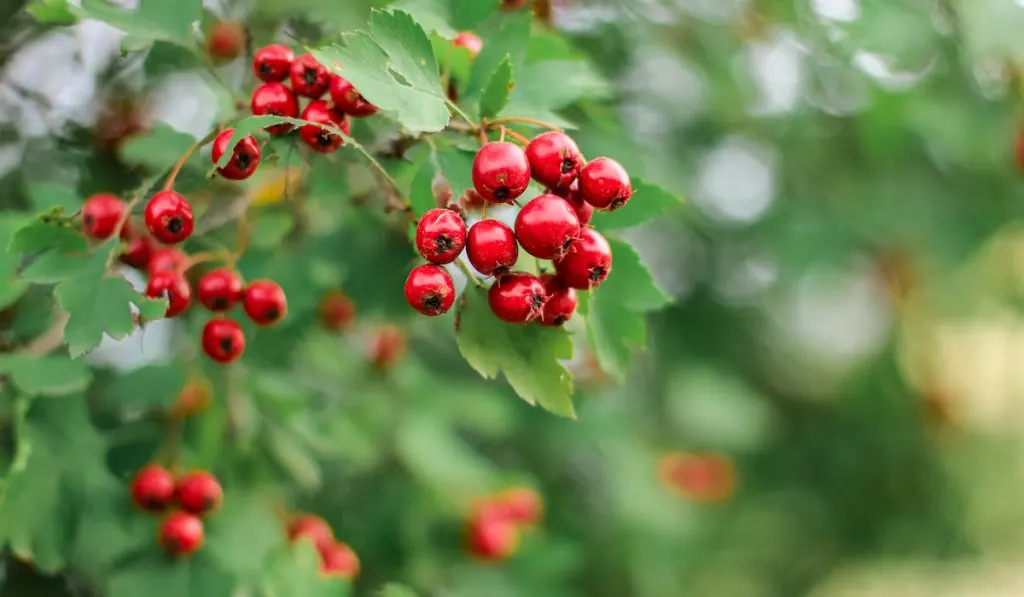
These berries can also be called haws. Haws are deep red and are produced by shrubs in winter. Haws cannot be found throughout all of winter as they are only produced from November to December.
One cool thing about haws is that they support many species of animals. They are eaten by over 300 species of insects alone and some species of birds, mammals, etc.
Haws are rich in antioxidants, so they help boost your immune system. They can be eaten raw, but are mostly used to make different types of jellies, ketchup, and wines
5. Dog Rose (Rosa canina)
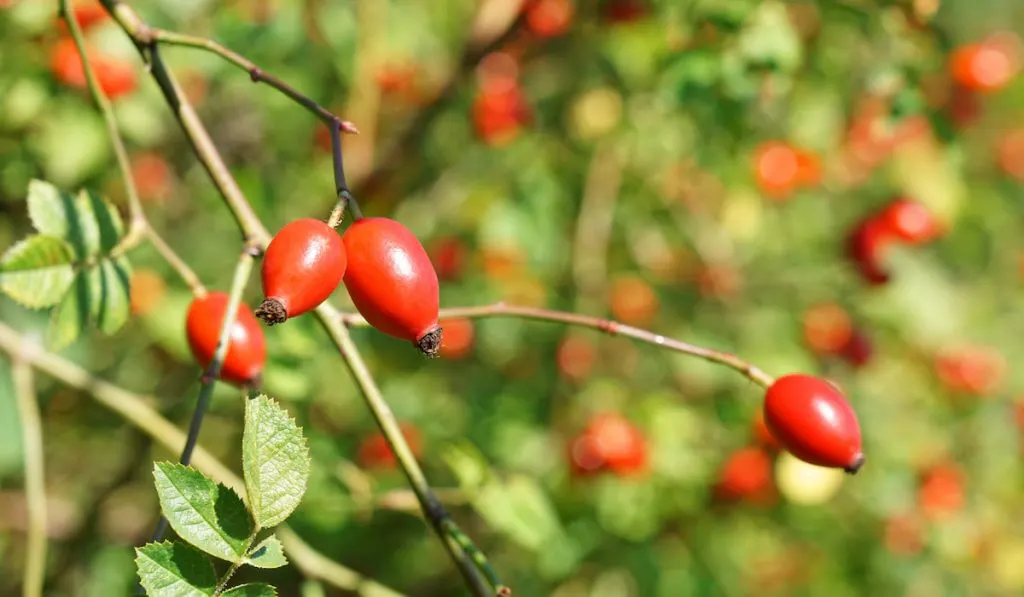
These berries, or rose hips, come in clusters. The striking orange-red color of dog rose berries can scare you into thinking that they are poisonous, but they are actually edible. Dog rose berries are rich in vitamin C and are used to make syrups.
Dog roses are common in Europe and produce fruits from September to December. Birds such as redwings, waxwings, and blackbirds eat a lot of dog rose berries in winter.
6. Holly (Ilex aquifolium)
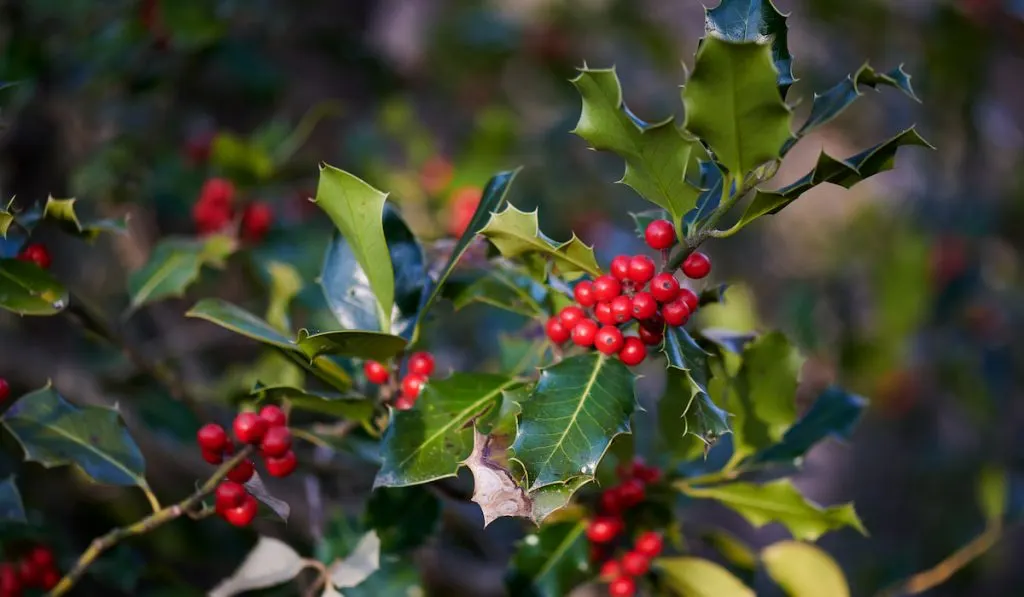
Note that holly berries are used only for decorations and are not edible by people. These red berries are formed in small clusters. Holly produces berries from November to February.
Holly berries are edible to animals. The mistle thrush is a bird that guards holly berries and prevents other birds from going close to the berries. Little mammals such as wood mice also consume holly berries.
Remember that you should only use holly berries as decoration and not consume them.
7. Spindle (Euonymus europaea)
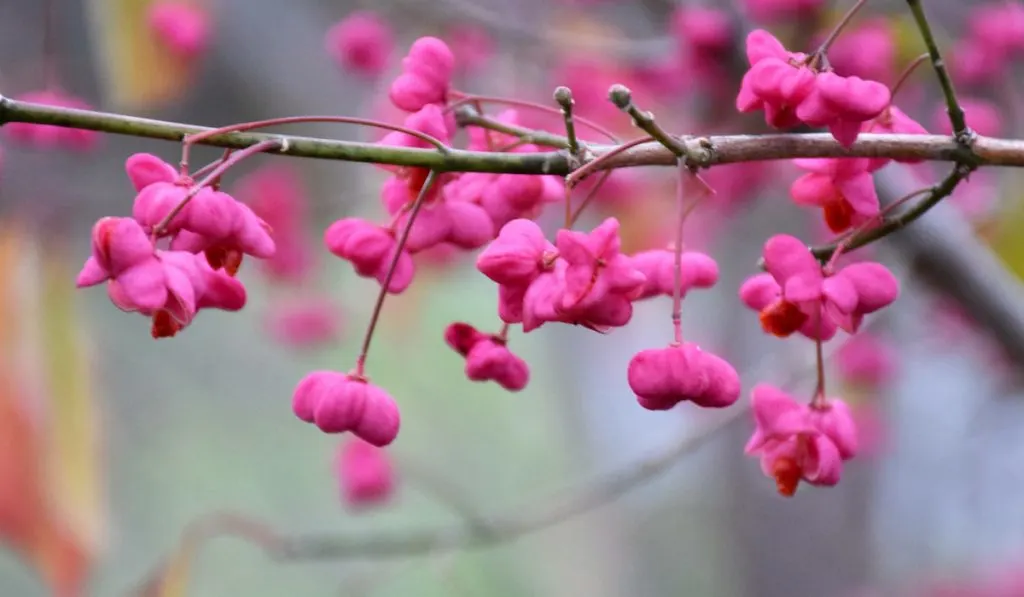
Spindle berries look like popcorn. These berries are pink and have bright orange seeds. They ripen from September to November and provide foxes, birds, and mice with berries in winter.
People use spindle berries to make powders that can treat lice and mange in cattle. The berries, seeds, leaves, and other parts of spindles are toxic, so it is better if you just look at the plant and don’t consume the berries.
8. Gaultheria procumbens
These berries are also called eastern teaberries. They are pink and edible. You can easily grow these berries in your garden in winter. The bush is evergreen and you can also use it as an ornamental plant. Just plant it in a pot in your door front.
In the wild, eastern teaberries are constant sources of food for animals.
9. Mistletoe
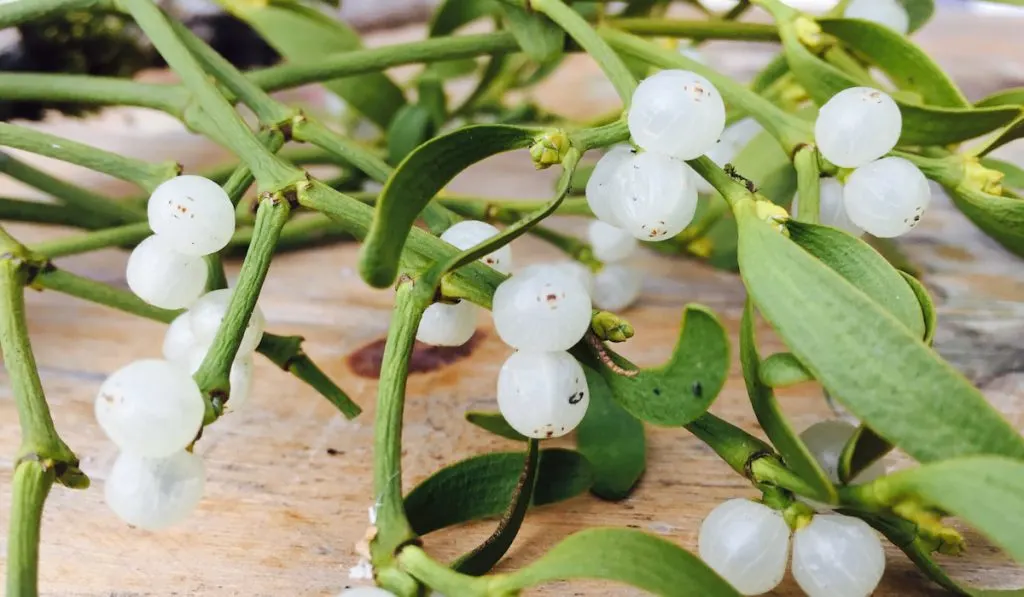
This parasitic plant grows attached to trees such as apple, lime, or conifer. The berries of mistletoe are white and look magical. Mistletoes are evergreen and can produce berries in winter.
There are so many legends about mistletoes and the most common ones say that mistletoes bring good luck and repel evil spirits. The plant looks magical and it is commonly used as a romantic plant (try kissing your significant other under a mistletoe).
Do not consume mistletoes as they are poisonous. Mistletoes are poisonous to both people and animals, so it is best that you stick to their decorative uses.
There are so many types of berries that can grow in winter. Make sure you check local guidelines before you eat any wild berry in winter.
Related Questions and Answers
1. Can You Grow Non-Winter Berries in Winter?
Do you want to grow a non-winter berry in winter? It is possible. People grow non-winter plants in winter for various reasons.
Here are some cool ideas to grow non-winter berries in winter:
- Grow in a Greenhouse: Growing your berries in winter can help extend their growing season as you can increase the temperature in your greenhouse. Make sure that the plant is getting enough sun and is exposed to just the right temperature.
- Cover the Berries with Cloches: Cloches can help protect your berries from the winter. Use cloches for berries that have already produced fruits and you are just waiting for the fruits to ripen.
- Mulch the Berries: Most plants die in winter because of the temperature of the ground. Mulching can help increase the ground temperature for some days to help ripen your berries.
As you can see, it is possible to grow non-winter berries in winter though it requires a lot of effort.
2. When Is the Best Time to Start Winter Berries?
You should know that many types of berries are either biennial or perennial. This means that you might not get berries in the same year that you planted them so you can start the plant whenever you want.
The growing season for most plants (including berries) starts in early spring so you can start them in spring and early summer.
3. Aside from Berries, What Fruits Can Grow in Winter?
Here are examples of plants that you can grow in winter according to your location:
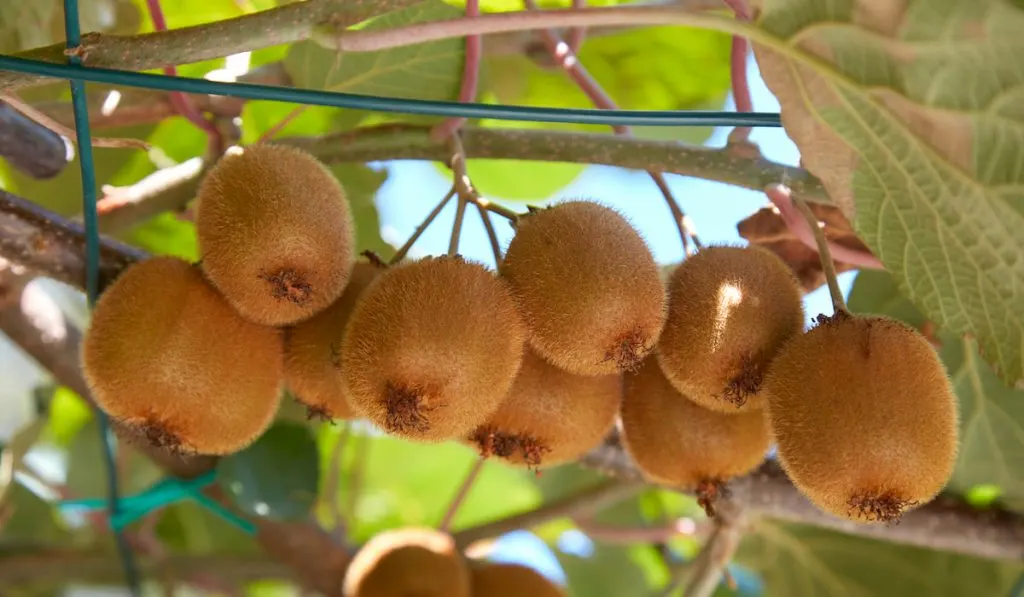
- Winter Squash: You can start your winter squash immediately after the last frost date so that it can produce fruits in autumn. Grow winter squash in zones 3-9.
- Honeycrisp Apples: This plant is best for USDA hardiness zones 3-6. Make sure that the plant has access to full sun in winter.
- Apricots: Grow apricots in USDA hardiness zones 4-8. If you are growing apricots in your home, grow them on the south-facing side where they can receive sufficient sun. You should start the tree early so that they can have deep roots before winter comes.
- Cherries: Grow cherries if you live in USDA hardiness zones 3-7. Cherries that flower early may not survive the winter. Your cherries that produce flowers in the fall can survive the winter.
- Plums: Plums are best for zones 4-9. While midi plum varieties will not fruit in winter, European plums produce fruits in winter successfully.
- Grapes: Plant grapes if you live in USDA hardiness zones 4-11. Just like berries, you can use grapes to make wines. Start your grapes in early spring.
- Kiwis: Kiwis are best for zones 7-9. Plant your kiwis where they can receive full sun.
Who knew that there are so many plants to harvest or grow in winter?
Final Thoughts
Winter berries are types of berries that you can find in winter. Some plants produce berries just before winter while others produce berries throughout the winter.
With winter berries, both animals and humans can continue to enjoy delicious and nutritious berries in winter.
